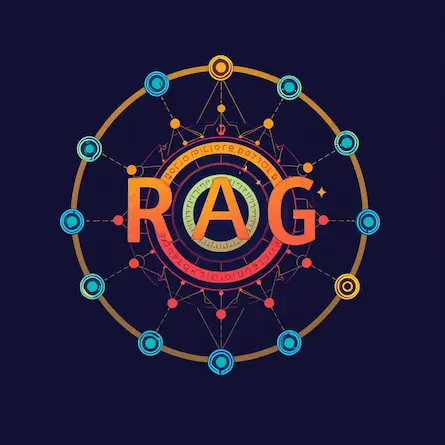
Comprehensive Guide to Using Large Language Models (LLMs) for Writing Books with Memory and Chapter-by-Chapter Progression
- Ctrl Man
- AI Writing , Technology
- 14 Sep, 2024
Comprehensive Guide to Using Large Language Models (LLMs) for Writing Books with Memory and Chapter-by-Chapter Progression
Introduction
In the digital age, writers have access to powerful tools that can augment their creativity, efficiency, and storytelling ability. One such tool is large language models (LLMs), which are sophisticated AI systems capable of generating human-like text based on patterns learned from massive datasets. This guide aims to provide a detailed introduction for beginners interested in using LLMs specifically for writing books with memory and maintaining coherence through chapter-by-chapter progression.
Understanding Large Language Models
What Are LLMs?
LLMs are advanced forms of artificial intelligence trained on vast amounts of text, allowing them to generate coherent narratives across different genres. They excel at understanding context, creating dialogue that flows naturally, and maintaining a consistent tone throughout the writing process.
Key Features of LLMs for Writing Books
- Memory Retention: Some models can retain information about characters, plot points, or themes between interactions.
- Chapter-by-Chapter Progression: With the right setup, LLMs can write books chapter by chapter, maintaining a cohesive story arc.
- Customization: Models can be fine-tuned to match specific writing styles or genres.
Choosing the Right Open Source LLM for Your Writing Needs
GPT-NeoX (EleutherAI)
Key Features:
- Size and Performance: One of the largest open-source models with a comparable architecture to GPT-3, ideal for long-form content creation.
- Customizability: Offers flexibility in fine-tuning for specific writing tasks.
Memory Handling: Requires external memory systems (e.g., embeddings or vector databases) to manage context across chapters.
GPT-J (EleutherAI)
Key Features:
- Smaller Size: A 6B parameter model suitable for projects with resource constraints.
- Creativity and Narrative Generation: Well-suited for creative writing tasks.
Memory Handling: Manage context through external memory systems to achieve chapter-by-chapter continuity.
LLaMA (Meta AI)
Key Features:
- Efficiency: Designed for efficient performance even on smaller hardware, making it accessible for a broader audience.
- Strong Writing Capabilities: Generates coherent and sophisticated text without the need for extensive memory management in every use case.
Memory Handling: Relies on external mechanisms to maintain context across chapters, which can be customized based on project needs.
Mistral (Mistral AI)
Key Features:
- Versatility: A relatively new 7B model with excellent adaptability and performance.
- Customization: Offers a balance between efficiency and capability for various creative projects.
Memory Handling: Requires external memory systems to handle context, similar to LLaMA.
Qwen-2 (Alibaba DAMO Academy)
Key Features:
- Adaptability for Creative Tasks: Qwen-2 is a 7B parameter model optimized for both performance and general-purpose tasks, including book writing.
- Enhanced General Capabilities: This model is built to handle a variety of creative tasks and long-form content, delivering high-quality, coherent text outputs. It has been trained on diverse data and is effective in story generation, making it a suitable choice for novel-writing.
Memory Handling: Like other open-source models, Qwen-2 benefits from integration with external memory management systems, such as LangChain, to retain context between chapters. Its compatibility with such tools makes it versatile for writing projects where long-term memory and chapter continuity are crucial.
Claude-Inspired Open Source Projects
Key Features:
- Better Contextual Memory: Some open-source models inspired by Claude focus on enhancing long-term memory retention for tasks involving writing.
- Versatility and Flexibility: Ideal for maintaining continuity across chapters with improved contextual understanding.
Memory Handling: Requires integration with external memory management tools, like LangChain or Haystack, to effectively handle context in writing projects.
External Memory Integration: LangChain
Key Features:
- Enhanced Memory Management: A framework that integrates multiple memory mechanisms tailored for language models.
- Chapter-by-Chapter Writing: Allows for the setup of memory systems that retain past chapters, concepts, or characters, facilitating connected narratives across chapters.
Ideal Workflow and Setup Tips
Memory Management
Since most LLMs lack inherent long-term memory, integrating external tools like LangChain with Haystack or embeddings is crucial. These tools can store previous inputs, allowing the model to generate content that feels consistent and coherent as you write chapter by chapter.
Fine-tuning
Fine-tuning your chosen LLM on your specific style, plot, characters, and genre can significantly improve the coherence of your writing. Experiment with different prompts or data sets to find what best matches your project’s requirements.
Conclusion
Using large language models for writing books with memory and maintaining chapter-by-chapter progression offers unparalleled potential for creativity and efficiency. The choice of model depends on your specific needs, such as budget, available resources, desired output quality, and the complexity of the narrative you aim to create. By leveraging tools like LangChain for external memory management and fine-tuning these models to suit your writing style, you can harness LLMs to enhance your creative process significantly.
Resources
- Model Repositories: EleutherAI, Meta AI, Alibaba DAMO Academy
- External Memory Tools: LangChain and Haystack for embeddings-based search.
This guide serves as a starting point, offering insights into the capabilities of LLMs for book writing. As technology evolves, so too does the landscape of AI tools available to writers, providing new avenues to explore creativity in storytelling.





















